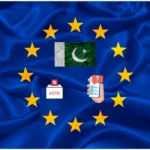In the award wining journal article, Miscarriage of Chief Justice: Judicial Power and the Legal Complex in Pakistan under Musharraf, author Shoaib A. Ghias explores the expansion of judicial power of pro-Musharraf judges that ironically led to their confrontation with the regime. The author argues that instead of blindly supporting economic liberalisation in a period of economic growth, the Supreme Court expanded power by scrutinising certain questionable urban development, privatisation and deregulation measures in a virtuous cycle of public interest litigation. The premise of that article is poignant given the ruckus that has recently engulfed Pakistan’s electronic media industry.
Two lessons are of utmost significance; first, the author contends that the basic political function of the bench in Pakistan’s military regimes had been legal legitimation of regime conduct. However, the pro-regime Chaudhry Court found a space to legitimize its independence in the form of public interest litigations in urban development, deregulation and privatization vis-a-vis the liberal economic policies of the regime. Actions such as suo motu against Capital Development Authority (CDA) and construction companies in the aftermath of the collapse of a high-rise residential tower in Islamabad in 2005 earthquake, the investigation of Oil Companies Advisory Committee (OCAC) and sugar price hike by NAB under the directive of Chaudhry in 2006, annulment of Pakistan Steel Mill privatization by the court, all sought to question certain adverse effects of rapid de-regulation and target high level corruption. Such cases caught the nations attention through the media when Chaudhry Court used its clout to defy perceived expectations about judicial function in Pakistan. It was the investigation of missing persons in 2007 that finally led to the inchoate conflict of interest with the establishment and Chaudhry’s suspension, which morphed in to the Lawyer’s movement.
The reason for the success of this movement was not just Chaudhry’s astute political maneuvering but more significantly, his initiative to investigate specious policies that were against public interest. In fact it must be noted that suo motu powers were not new to Pakistan at the time but his court took the onus to utilize it for the common good.
The media of Pakistan must not only be ‘seen’ working for the common good, they must take concrete measures for it. Issues such as chronic water and electricity shortage, corruption, internal security, high population growth and intolerance are far more poignant for Pakistan’s future survival than settling petty scores within the status quo. The electronic media in its infancy can take the onus to utilize legally a journalistic code of conduct to work for the common good before it can earn the public trust to fight political adventurism.
Second, the author contends in that paper that patterns in research on the legal complex show that the autonomy of the bench and the bar, and their interdependence are not only a distinguishing feature of political liberalism but also a condition in the fight for it. Based on this theoretical framework the author concludes that the Pakistani case (Lawyer’s movement) shows how the bench influenced the legal complex by not only protecting the autonomy of lawyers and the legal complex but also by intervening in bar politics to consolidate pro-bench and politically liberal factions. In a nutshell, the ‘united’ legal complex under the banner of astute leadership and strong public and civic support, upheld an important tenant of democratization i.e. judicial independence.
The key emphasis here is unity. The divisions among Pakistan’s press regarding ideology, subordination, allegiances, policy on freedom of expression or otherwise and etcetera are quite well known in the industry. Now with the Hamid Mir stint they have regurgitated in the public sphere. Indeed, media systems of any nation are inextricably linked with, and thus aptly represented by her politics. But it is up to the collective wisdom of the electronic and print media to work together under a common code of ethics and a strategic intent to form a 4th state that is not a farce.
As for the political economy of the intensely saturated electronic news market of Pakistan, it is inevitable that some players may succumb to financial woes; if experiences of our rather mature advertising houses are taken as an analogy. There are countless players who initially started off as ad creatives for instance, but ventured in to commercial production, digital entrepreneurship, real estate marketing and public advocacy. There are many opportunities in the emerging Pakistani public sphere notwithstanding the introduction of 3G/4G technologies. It’s high time media barons and the establishment realize that the trust bestowed on them by the public cannot be held hostage over squabbles and personal vendettas.










